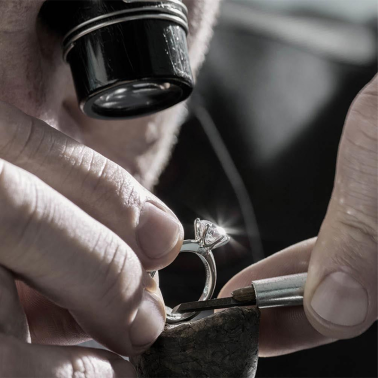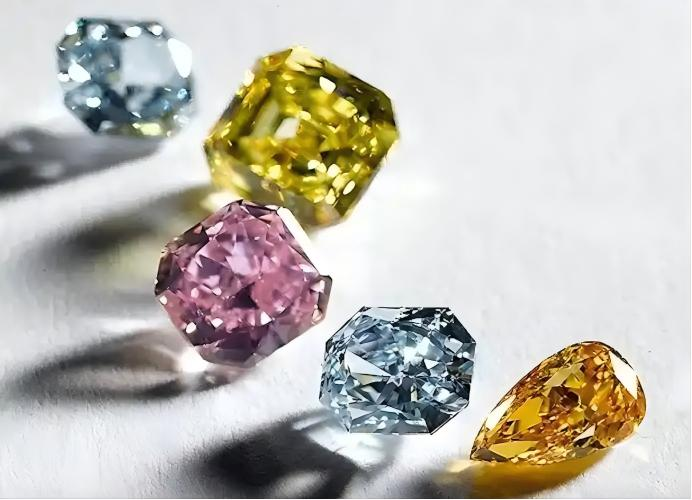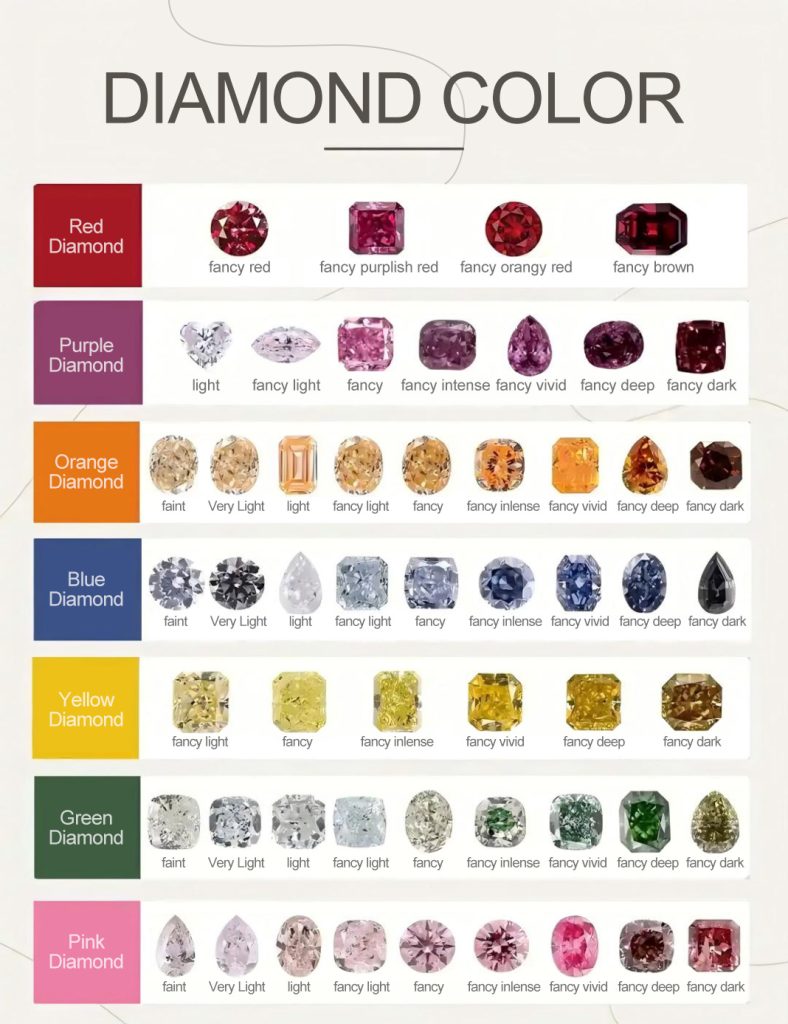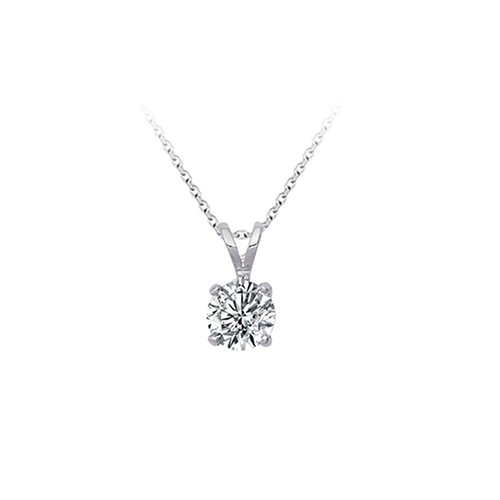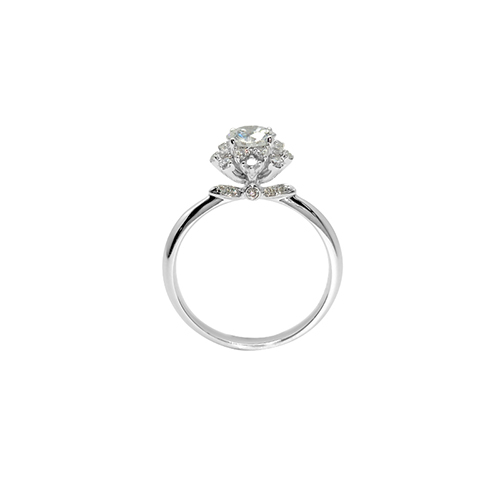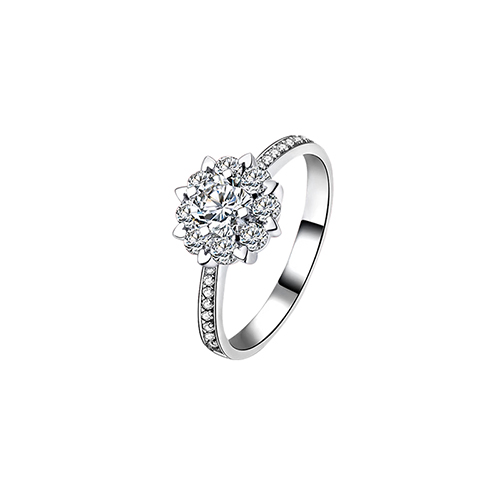4Cs: What Is Diamond Color?
Diamond Color Formation
A diamond’s color results from tiny impurities or defects in its crystal structure. The diamond itself is formed in a high-temperature and high-pressure environment. During this process, the mixing of trace elements may affect the color of the diamond. The main reason is due to the mixing of nitrogen atoms. When nitrogen atoms occupy specific positions in the crystal structure of the diamond, it will affect the optical properties of the diamond, causing the diamond to appear yellow or brown. The number and arrangement of nitrogen atoms directly determine the depth of a diamond’s color. Diamonds that contain more nitrogen typically appear a darker yellow or brown, while diamonds that contain less nitrogen may appear pale yellow or nearly colorless.
In addition, “colored diamonds” in diamonds are caused by the mixing of other rare elements or crystal defects, structural distortions, etc. during the growth process of diamonds. For example, boron element will make diamonds appear blue; crystal defects and structural distortions will make diamonds appear pink; radioactive elements or radiation will make diamonds appear green, etc. Since the formation process of colored diamonds is much more complicated than that of white diamonds, There are fewer colored diamonds than white diamonds, and the grading standards for colored diamonds are different from those for white diamonds.
Grading Standards for White Diamonds
Diamond color classification is based on the diamond’s transparency and colorlessness. The closer a diamond is to colorless, the higher its value. The color classification standard for diamonds is mainly developed by the International Gemological Institute (GIA), using letters to indicate color, from D to Z, with D indicating complete colorlessness and Z indicating a distinct yellow or brown tint.
D: Colorless (highest grade, rarest, most expensive)
E: Colorless (very close to colorless, can only be distinguished under very high magnification)
F: Colorless (almost colorless, the color difference is almost invisible to the naked eye)
G: Close to colorless (close to colorless, it will only differ when professionals observe it with a magnifying glass)
H: Close to colorless (slight color difference visible to the naked eye, but not obvious)
I: Light yellow or light brown (the color difference is slight and can be seen under a magnifying glass or under certain lights)
J: Light yellow or light brown (obvious color, slight yellow or brown tint visible)
K – Z: The color gradually deepens, from light yellow or brown to dark yellow, brown, and possibly even a gray tinge. Diamonds in this range are generally considered to have poor color.
The core of diamond color grading lies in the “colorless degree” of the diamond. Completely colorless diamonds (grade D) reflect light best and are generally considered the most attractive. As a diamond becomes darker in color (for example, taking on a yellow or brown tint), the diamond’s reflections become slightly less intense and its fire and brilliance decrease.
Grading Standards for Colored Diamonds
Colored diamonds refer to diamonds with rich and diverse colors. Their color grading system is different from that of colorless diamonds. The color grading of colored diamonds is mainly formulated by organizations such as the International Gemological Institute (GIA). GIA has developed a unique grading system for colored diamonds, which is mainly evaluated based on the main color of the diamond and the concentration and saturation of the hue.
Mainly divided into 9 levels:
1. Faint refers to acolor with the highest lightness and the lowest chroma.
2. Very light refers to a color with very high lightness and the lowest chroma.
3. Light refers to a color with higherlightness and low chroma.
4. Fancy light refers to a color with high brightness and lower chroma.
5. Fancy refers to a color with medium lightness and low to medium chroma.
6.Fancy intense refers to a color with medium lightness and medium chroma.
7. Fancy vivid refers to a color with medium lightness and medium to high chroma.
8. Fancy dark refers to acolor brightness ranging from clear to dark, and the chroma ranging from low to high.
9. Fancy deep refers to a color with a dark to dark lightness and a medium to high chroma.
Since the main colors of colored diamonds are subdivided into many different categories, there are some subtle differences in the grading of colored diamonds for each main color, but overall they are all slightly evolved based on GIA’s colored diamond color grading system.
Among them, natural colored diamonds have the largest variety of main colors, but the natural growth environment of colored diamonds is extremely harsh, resulting in the overall scarcity of colored diamonds. The overall number of lab grown colored diamonds is relatively large, but technical limitations have resulted in fewer main color varieties on the market, mainly concentrated in yellow diamonds, blue diamonds, and pink diamonds, and there are fewer lab grown colored diamonds in other colors.
The color grading of diamonds is not only an important criterion for evaluating diamond quality, but also directly affects the visual effect and market price of diamonds. From colorless diamonds to various colored diamonds, the color of each diamond has its own unique charm. When purchasing diamonds, understanding the diamond color grading system can help you choose the diamond that best suits your personal needs and budget. Whether you choose a colorless diamond or a colored diamond, understanding these basics will help you navigate the world of jewelry.

